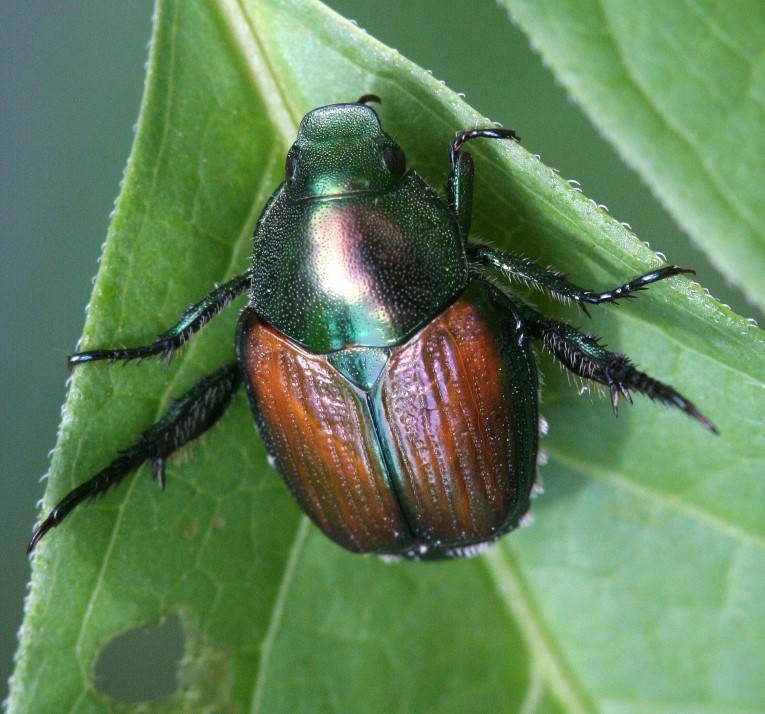
Japanese Beetle

Japanese Beetle Distribution and Biology
- The Japanese beetle was unintentionally introduced in the U.S. through horticultural nursery stock in New Jersey in 1916. Since then, the Japanese beetle population has made its way west.
- This beetle feeds on 300 different host species, including corn and soybeans.
- Japanese beetles have the potential to build up economically damaging populations in soybeans.
- Japanese beetles feed on the leaves of soybean plants. They leave the leaf veins intact, creating a lace-like effect.
- Japanese beetles overwinter in areas surrounding the field as late-stage larvae, within 5 inches of the soil surface. The grubs move closer to the soil surface as the temperature increases.
- Japanese beetles produce one generation per year. However, they are highly mobile, so it is important to continuously scout through seed set to prevent migrated adults from reinfesting the field.
Insecticide Resistance in Japanese Beetle
Although there are no confirmed cases of insecticide resistance in Japanese beetles in soybeans, there are some reports of Japanese beetles collected from golf courses, turf grass, etc., in eastern states that have shown resistance to insecticides.
Management of Japanese Beetle in Soybeans
- Scout consistently. Examine at least five plants from five different areas of the field to estimate the percent of defoliation and determine if thresholds have been met. Look thoroughly at the leaves from the top, middle and bottom of the plant. Continue scouting through seed set.
- Look thoroughly for infestations. Scout for Japanese beetles throughout the field — not just on the edge where the beetles congregate — to avoid making treatment decisions based on pest pressure in just a small part of the field.
- Apply after thresholds have been met. While scouting, take note of the levels of defoliation. Consider application of insecticides only after the proper thresholds have been met. For Japanese beetles, the economic threshold during the preflowering stage is when insects are present and defoliation exceeds 30%. During the flowering, pod-forming and pod-filling stages, the threshold is met when insects are present and defoliation exceeds 20%.
Image: David Cappaert, Bugwood.org
